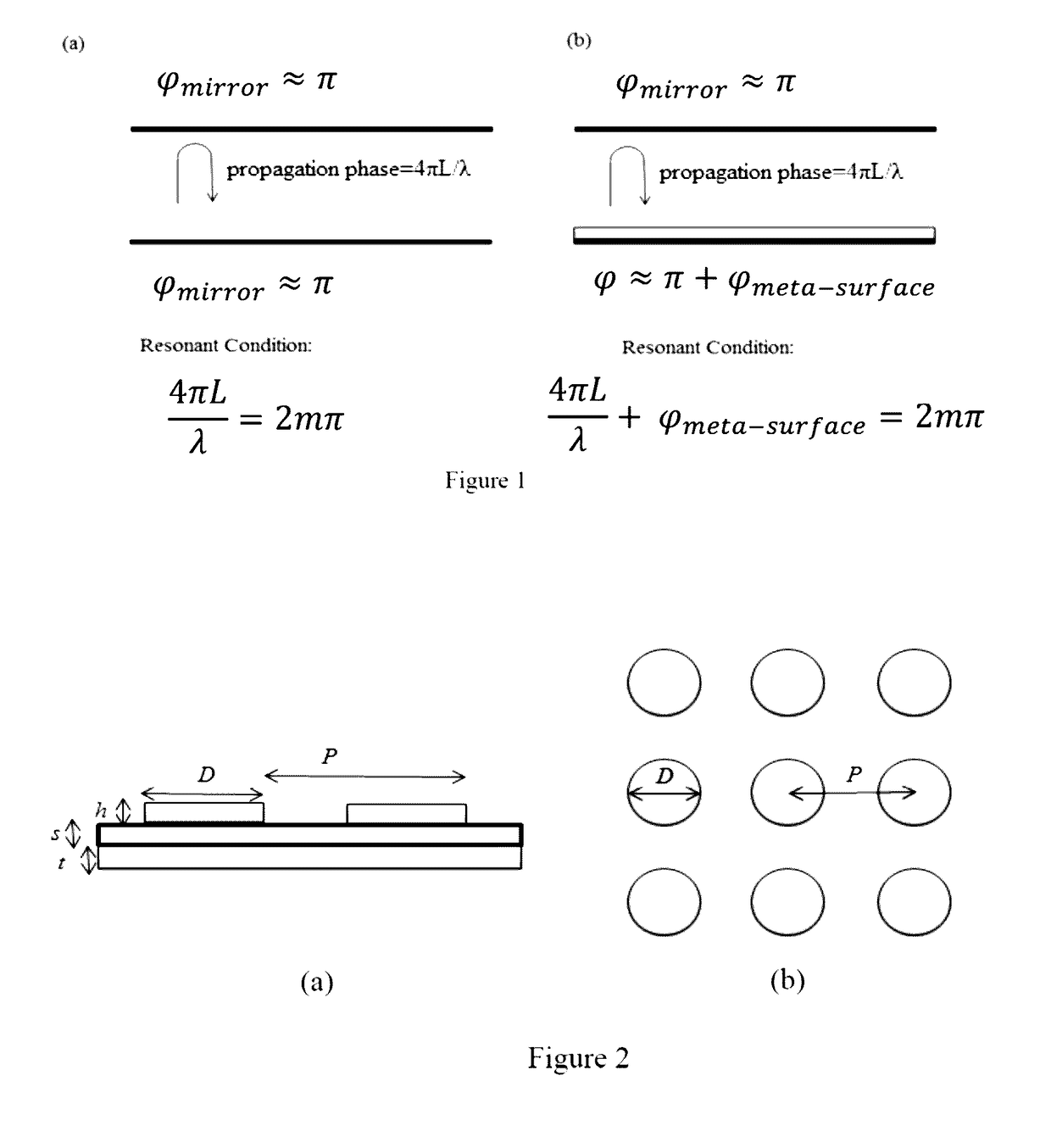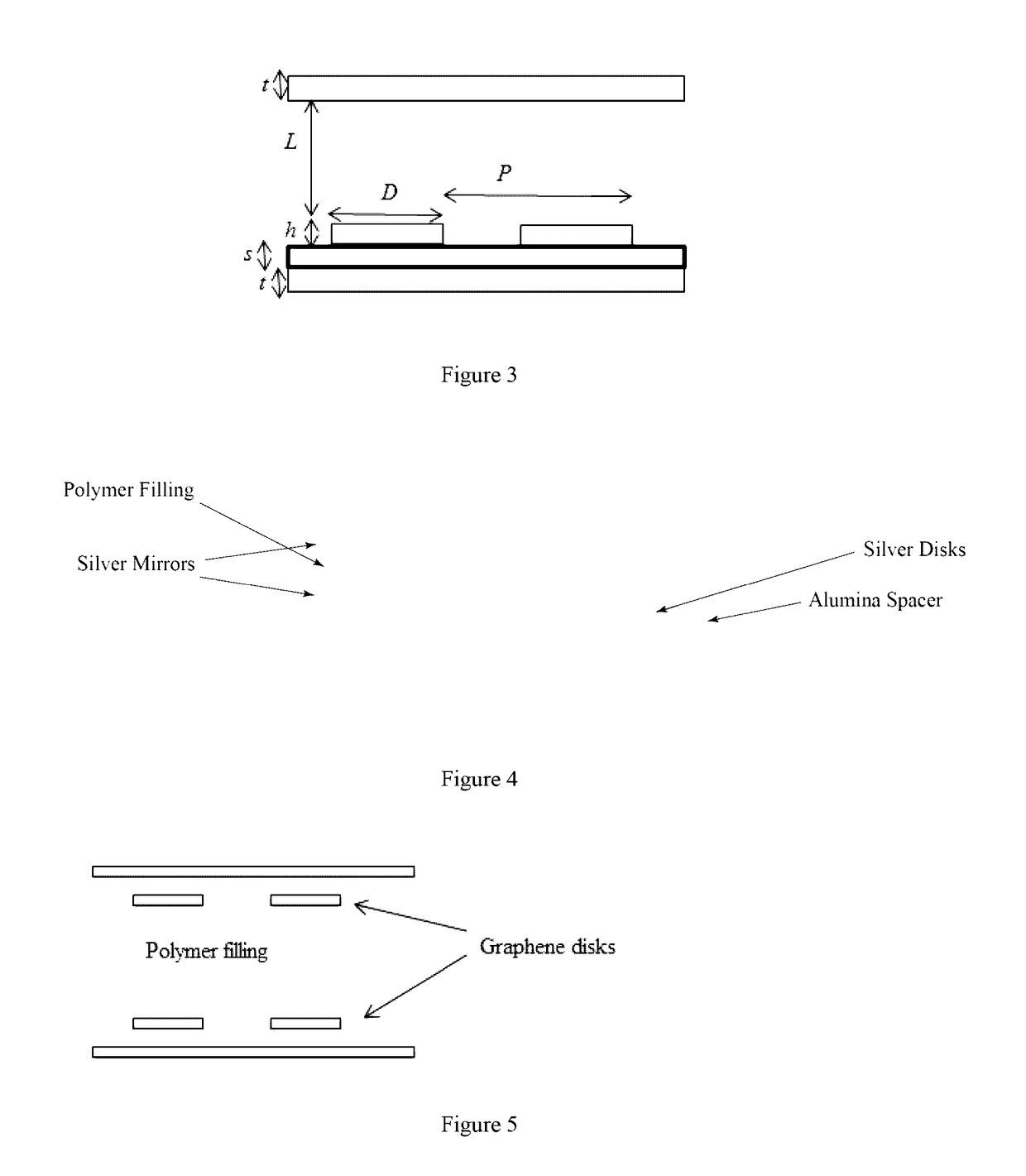Ultra-small cavity with reflecting metasurfaces
a metasurface and ultra-small technology, applied in the field of ultra-small cavities, can solve the problems of difficult coupling waves to and from spp cavities, difficult to integrate them efficiently with external devices, and complicated techniques for using negative permittivity and permeability
- Summary
- Abstract
- Description
- Claims
- Application Information
AI Technical Summary
Benefits of technology
Problems solved by technology
Method used
Image
Examples
Embodiment Construction
[0022]The abstract design of the invention is illustrated by FIG. 1, which shows a comparison between a conventional parallel mirror Fabry-Pérot resonator (FIG. 1(a)) and the currently disclosed structure, where one or both mirrors are coupled to a metasurface (FIG. 1(b)), adding an arbitrary phase shift of φmeta-surface. In the conventional case, the resonance condition is 4πL / λ=2mλ, imposing a minimum limit of λ / 2 on the value of L. With the present invention structure, however, the resonance condition becomes 4πL / λ+φmeta-surface=2mπ. With the fact that φmeta-surface can be designed to take on any value from 0 to 2 π, the effect is no constraint on L, allowing L to be arbitrarily small. Although fabrication techniques might currently place constraints on size, there are no fundamental physical size constraints on the present invention. The fabrication and use of smaller-scale devices such as those described herein are more useful and more applicable because they are highly integra...
PUM
 Login to View More
Login to View More Abstract
Description
Claims
Application Information
 Login to View More
Login to View More - R&D
- Intellectual Property
- Life Sciences
- Materials
- Tech Scout
- Unparalleled Data Quality
- Higher Quality Content
- 60% Fewer Hallucinations
Browse by: Latest US Patents, China's latest patents, Technical Efficacy Thesaurus, Application Domain, Technology Topic, Popular Technical Reports.
© 2025 PatSnap. All rights reserved.Legal|Privacy policy|Modern Slavery Act Transparency Statement|Sitemap|About US| Contact US: help@patsnap.com



